Review: Lexus HS250h
Every luxury car make seems compelled to explore how low it can venture in the American market without hopelessly devaluing the brand. Mercedes no longer offers the C-Class hatchback Coupe and has shied away from offering the A- and B-Classes in the United States. BMW hasn’t offered a semi-affordable four-cylinder here since the 318ti was sent packing a decade ago. The Jaguar X-Type didn’t cut the mustard on this side of the pond. And Cadillac is still waiting for the world to forget the 1980s Cimmaron. Unfazed by this clear pattern of failure, Toyota for 2010 offers up the Lexus HS 250h. So, shall the ridicule begin?
A key takeaway from the success of the Prius: Americans prefer their hybrids in bespoke sheetmetal. So the HS 250h gets its set from the Euro-market Toyota Avensis. This would be a neat trick, if the Avensis was either distinctive or attractive. But it’s neither. The windshield and backlight are more steeply raked than a Corolla’s, requiring Prius-like little windows in the A-Pillars, and the HS’s exterior dimensions are a half-size larger than the compact Toyota. Trivial details. Most eyes will see a Corolla tarted up with so much of the requisite Lexus chrome trim that it’s clearly overcompensating for either its ungainly proportions or its low birth.
Things get better once inside the car. First off, the door sounds very Lexus when pulled shut. The interior design has shades of econobox, but the solid-looking center stack slopes downward stylishly and both it and the instrument binnacle are upholstered. The only other Lexus with any upholstered bits on the IP is the LS 600h flagship. Is the material leather or leatherette? It’s certainly not the creamy stuff slathered all over the interior of the 600h, but is at least a good imitation of basic leather. As in recent Cadillacs, upholstering parts of the IP takes the interior ambiance up a notch or two. This is overcompensation I can live with. Ditto the definitely LS-like semi-aniline leather that trims the heated and ventilated seating surfaces in the Premium trim.
From the start Lexus has earned a reputation for well-sorted ergonomics, and the HS carries on this fine tradition. Logically sized and arranged knobs and buttons handle most functions. Secondary settings and the nav system are operated, as in the RX, via Lexus’s response to iDrive. A comfortable palmrest, force-feedback, and slick graphics provide the console-mounted toggle pad with much of the familiar feel of a computer mouse. Where iDrive is often frustrating, “Remote Touch” (I didn’t name it) can be downright fun. An available 15-speaker Mark Levinson system provides another sign that the HS isn’t a Toyota anymore.
Good stuff continues with the front seats. They’re very comfortably contoured, and provide good support despite being much cushier than any from Germany. The rear seats—not so good. Externally, when compared to the Corolla, the HS 250h is a half foot longer, and inch wider, and 1.6 inches taller. And yet the Lexus has nearly two inches less legroom. Somehow two generations of sluggish IS sales have not taught Lexus that Americans aren’t big on luxury sedans with tight rear seats. You don’t want to go below 36 inches of rear legroom. The HS offers 34.5. Where did all of those extra inches go? I’m guessing those raked windows and the hybrid bits.
I’ve never been a fan of cars with A-Pillars so steeply raked they require windowlettes, and I’m not going to start with the HS. If I wanted to feel like I’m driving a minivan, I’d have a minivan. At least the view over the IP is otherwise good—no sense you’re gazing over acres of plastic. For those times when the guy in the SUV feels compelled to pull as far forward as you are when you’re both trying to turn onto a busy street (as if h
e can’t see over your car), the Premium-only Technology Package includes a wide-view front monitor. Via an ultra-wide-angle camera mounted in the nose of the car, this monitor gives you a good, long view in both directions, at once. Look closely, though, because objects in this view are very small and MUCH closer than they appear.
The wide-view front monitor is only one of many features that should (but won’t) guarantee that the HS will never trade paint with another automobile. We’ve also got ABS, brake assist informed by a radar-based pre-collision system, TRAC, VSC, adaptive cruise, auto-dimming steering-linked LED headlights, a trio of auto-dimming mirrors, a rearview monitor, front-and-rear obstacle detection, lane departure warning, lane departure prevention (when the warning fails), and a driver attention monitor. In the case that all of this fails (perhaps because the driver is too busy toying with the Remote Touch), a bevy of ten airbags can deploy to cushion the impact and an automatic collision notification system will dial 911.
The HS 250h shares its 147+40-horsepower powertrain with the Toyota Camry Hybrid. I sampled a TCH soon after it was introduced, and hated this powertrain. Rough engine, ropy CVT, non-linear power delivery, non-linear brakes…a whole lot of not good. Well, they fixed it. The HS’s brakes suffer no obvious transition from regenerative braking to conventional braking. And the 2.4-liter gas-hybrid four-cylinder sounds and feels almost normal in regular driving. There’s some scoot off the line, thanks to the assistance provided by the insta-torque electric motor. Acceleration slackens at higher speeds, but never becomes downright slow. Force the engine up towards the assumed (no tach) redline, and you’ll escape a four-cylinder Sonata, if not the four-cylinder sonata. It’ll do for those focused on the fuel economy or the Remote Touch rather than performance.
Performance? What about the HS suggests that the word should even appear in this review? That would be the 225/45WR18 tires. What are WR-rated treads doing on a car limited to 112 MPH? Well, they provide considerably more grip than you’ll find in a Prius, and together with mildly aggressive suspension tuning keep the tallish, ungainly-proportioned HS from falling all over itself in aggressively-taken curves. But they contribute to a much flintier ride than people expect in a Lexus. Overcompensation, again, and this time it harms the car’s prospects even more than the tight rear seat. While the latter will only occasionally become an issue, and even then not for the driver, a jittery, unsettled ride affects everyone in the car, and often.
Oddly enough, a Touring package that bundles these tires with a sport-tuned suspension (and a rear spoiler and, wait for it, aluminum sport pedals!) is optional on the base HS but not available on the Premium. Is this suspension an undocumented standard feature with the Premium? It’s hard to believe that Lexus would offer the car with an even harsher suspension.
This being a non-performance hybrid (well, apart from the sport pedals and low-profile rubber), people are going to expect great fuel economy. The 35/34 city/highway ratings are better than those of, say, an Acura TSX (21/30), but are a far cry from those of a Prius (51/48). Good enough? Perhaps for those who do most of their driving in city conditions. But no one’s going to be ecstatic. Toyota might want to figure out how Ford squeezed 41/36 out of the Fusion Hybrid.
In the end, the HS 250h is saved by low expectations. Based on the exterior appearance and specs you expect it to be awful, only to find that the performance and handling achieve adequacy and that some aspects of the car—the interior trimmings, the front seats, the toys—are surprisingly good. Even the bad bits, the cramped rear seat and crunchy ride, will only stunt sales of the car. A luxury brand can survive these disabilities, homely exterior styling, and the confused silliness of sport aluminum pedals and speed-rated rubber on an econo-tuned hybrid. The one thing the HS 250h could not afford to seem, especially with an all-boxes-checked $48,000 sticker ($44,770 as tested), is cheap. And, thanks to the good bits, it does not.
[Michael Karesh owns and operates TrueDelta, a third-party reliability and mileage survey site]
Performance: 2 stars
Where else can you spend nearly $50,000 and get only 187 horsepower?
Ride: 2 stars.
Unexpectedly brittle for a Lexus sedan.
Handling: 3 stars.
Not bad = better than expected.
Exterior: 1 star.
Looks like a blinged-out Corolla. More invisible than unattractive. Would rate a little higher as a Toyota.
Interior: 3 stars.
Stylistically struggles to escape its compact Toyota roots. Comfortable front seats, but cramped rear seats.
Fit and Finish: 5 stars.
About as good as you’ll find at this price point.
Toys: 5 stars.
Too many to list.
Desirability: 3 stars.
Lexus materials + toys + 35 MPG, but no wow factor and priced about $3,000 too high.
Price as tested: $44,770
Overall Rating: 3 stars.
Not an embarrassment. The Lexus brand will survive this car.
Michael Karesh lives in West Bloomfield, Michigan, with his wife and three children. In 2003 he received a Ph.D. from the University of Chicago. While in Chicago he worked at the National Opinion Research Center, a leader in the field of survey research. For his doctoral thesis, he spent a year-and-a-half inside an automaker studying how and how well it understood consumers when developing new products. While pursuing the degree he taught consumer behavior and product development at Oakland University. Since 1999, he has contributed auto reviews to Epinions, where he is currently one of two people in charge of the autos section. Since earning the degree he has continued to care for his children (school, gymnastics, tae-kwan-do...) and write reviews for Epinions and, more recently, The Truth About Cars while developing TrueDelta, a vehicle reliability and price comparison site.
More by Michael Karesh
Latest Car Reviews
Read moreLatest Product Reviews
Read moreRecent Comments
- SCE to AUX Range only matters if you need more of it - just like towing capacity in trucks.I have a short-range EV and still manage to put 1000 miles/month on it, because the car is perfectly suited to my use case.There is no such thing as one-size-fits all with vehicles.
- Doug brockman There will be many many people living in apartments without dedicated charging facilities in future who will need personal vehicles to get to work and school and for whom mass transit will be an annoying inconvenience
- Jeff Self driving cars are not ready for prime time.
- Lichtronamo Watch as the non-us based automakers shift more production to Mexico in the future.
- 28-Cars-Later " Electrek recently dug around in Tesla’s online parts catalog and found that the windshield costs a whopping $1,900 to replace.To be fair, that’s around what a Mercedes S-Class or Rivian windshield costs, but the Tesla’s glass is unique because of its shape. It’s also worth noting that most insurance plans have glass replacement options that can make the repair a low- or zero-cost issue. "Now I understand why my insurance is so high despite no claims for years and about 7,500 annual miles between three cars.



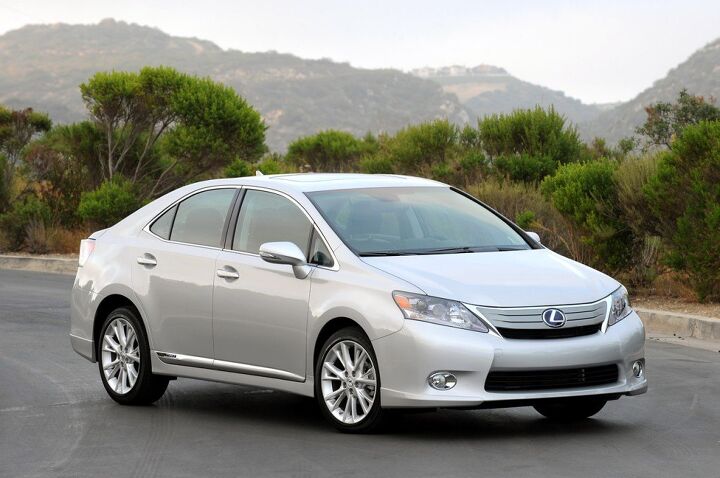



















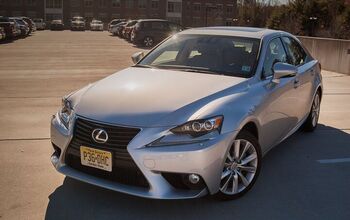
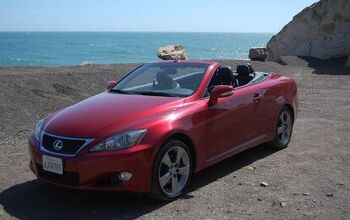
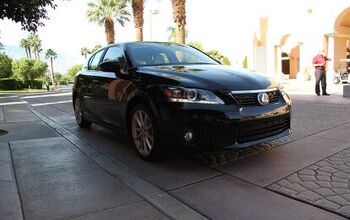
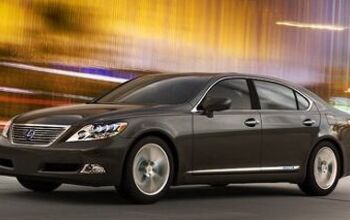
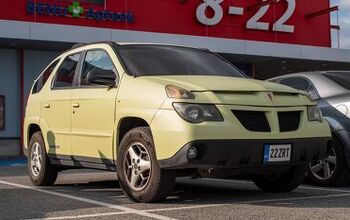


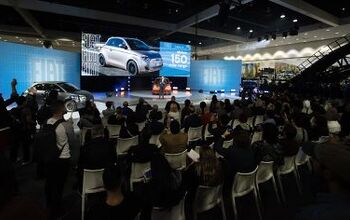






Comments
Join the conversation
- PennSt8 there is absolutely no reason to buy this over a Prius or Fusion Hybrid. Seems some others here don't see what all the fuss is about. I too joined that club earlier when I observed - most drifted off to other vehicles brought in, notably the GS350. The problem is that the Prius has been so well executed that a buyer is likely to go directly to a Toyota dealership. Fixing the 'L' badge onto this vehicle, knowing that it contains nothing more than the Camry Hybrid powertrain inside is not going to attract a Lexus audience. The marketing of power hybrid sedan cars hasn't worked for any manufacturer so far and this Prius tricked out to a 2.4L engine may be repeating history one more time. Although I would like to see further advances in engine development that is not likely to occur on a completely new model, that is just not how Toyota works. As far as I am concerned the Lexus badge offers nothing to the Prius brand with this model. Despite its complexity, or perhaps because of it, the Prius already exhibits superlative reliability and a Lexus nameplate won't be significantly altering that. Timing for the HS250 couldn't have been worse coming on the heels of the release of the MY 2010 Prius. Remember that that vehicle was a new design also, representing the first redesign of the Prius in almost six years. Lexus needs to differentiate the marque and the best way, which I would have thought was rather obvious, would have been to have bring the Prius into the Lexus fold by incorporating AWD. An AWD Prius would have attracted a lot of attention I am sure. It hasn't been done on a sedan yet though the technology of adding an electric transaxle has been proven out on the RX400H for several years now. In its current configuration I would say that the HS250, like the LS600H before it, is yet another vehicle that no-one was waiting for.
The naysayers were right - the HS250h really is a blinged-out Corolla! Here's proof, on the US Govt's NHTSA website: Go here: http://www-odi.nhtsa.dot.gov/ewr/qb/index.cfm Under search criteria, enter the following: * Manufacturer: Toyota Motor Corp * Report type: Light vehicle production * Reporting Period: Year 2009, Qtr 3 Click the resulting link to see the filings. Click "next" until you see filings for the HS250h. Here's what you'll see: Make: Lexus Model year: 2010 Model: HS Total production: 4564 Type code: PC Platform: COROLLA The fully loaded Lexus Corolla runs about $50K, and is available at a dealer near you.